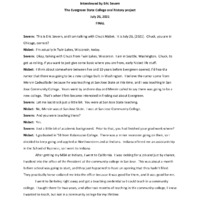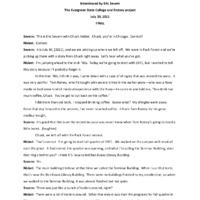Chuck Nisbet Oral History Interview
Item
- Identifier
- Title
- Date
- Creator
- Contributor
-
NisbetChuck
-
Chuck Nisbet Oral History Interview
-
July 26, 2021
-
July 30, 2021
-
Chuck Nisbet
-
Eric Severn
Position: 432 (10 views)

